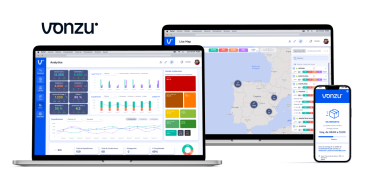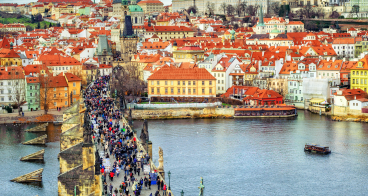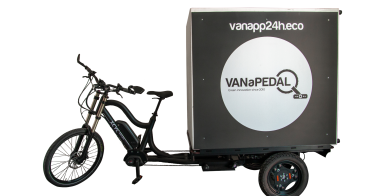Concepts that improve city logistics: Groningen example
Living in a busy city comes with many perks. The convenience of having a variety of shops and services just a stone's throw away, the ability to order goods and have them delivered to our doorstep, and the option to have warm and delicious food delivered straight to our homes. These are all aspects of our daily lives that we have come to take for g
Urban logistics involves the movement of goods and services within urban areas, and it affects everything from traffic congestion and air pollution to economic efficiency and quality of life. As we all rely on urban logistics, when it doesn’t work well, it can have negative impacts on our daily lives.
The Netherlands, with its dense population and limited space, has long been a leader in developing innovative solutions to improve urban logistics and make our cities more liveable and sustainable. The city of Groningen, a university city in the North of the country, is a prime example of this.
While none of the solutions is unique only to Groningen, the city is special for applying a variety of policies and solutions to improve city logistics and quality of life. It’s a result of decades-long incremental improvements, that create an economically vibrant city with lively and safe public space.
Here are some concepts the city of Groningen applies:
Allowing deliveries only at a certain time
Groningen has implemented a system of time slots for cargo and delivery vehicles in order to improve urban logistics. These vehicles are only permitted to enter certain streets between 5:00 am and 12:00 pm. Outside of these times, a permit is required. This strategy works to decrease traffic congestion and air pollution, as cargo and delivery vehicles are not on the road during peak hours when traffic is the heaviest. Additionally, this regulation also helps to decrease noise pollution, as these vehicles are not making runs during early morning or late-night hours. It also incentivises businesses to plan their cargo and delivery schedules more efficiently, leading to a reduction of unplanned trips and more judicious use of resources.
This system has been in effect for some areas of the city centre for years, but as of 2023 it applies to the entire city centre. The expansion of the time restriction area is imperative due to the changes in how the city centre is being utilised in recent years. The city centre remains a multi-functional place, but with a greater emphasis on socialising and staying, and less on shopping alone. Additionally, more visitors are coming to the city centre, and the increase in congestion is not limited to the current restricted areas.
Limiting polluting vehicles
Not only have the hours of operation for delivery vehicles been limited, but in the near future, the types of vehicles allowed in the city centre will also be restricted. Beginning in 2025, the city centre will become emission-free. This means that only vehicles powered by electricity, hydrogen, or human muscle will be allowed within the city centre. The city has already noticed that delivery and transport companies have begun to switch to electric vehicles in preparation for this change.
Consolidation and last-mile delivery
Another strategy used in Groningen to improve urban logistics is consolidation and last-mile delivery. This approach involves consolidating multiple deliveries into one, which reduces the number of delivery vehicles on the road. The last-mile delivery is then done by smaller, more sustainable vehicles such as cargo bikes or electric vans.
In order to achieve it, the city has been experimenting with hubs at the edge of the city. Various transport companies make their deliveries here, which are grouped together and taken to residents and retailers located in the city centre by electric cargo bike and other modes of transport.
Using cargo bikes for delivery
The Netherlands has a long history of using cargo bikes for delivering goods, particularly in urban areas. These bikes are smaller and more manoeuvrable than traditional delivery trucks, which reduces traffic congestion and air pollution.
As battery technology is improving, these cargo bikes can go faster, longer and carry large amounts of goods. Some of these bikes can carry up to around 500 kilos, which is sufficient for the majority of inner-city deliveries. Since these bikes are smaller and greener than a truck, they are allowed in the city centre all around the clock.
Sharing knowledge and collaborating with others
Perhaps my favourite approach of Groningen is to not keep the success and experience to itself. The city is publishing the results of its projects and sharing the information with other cities. It’s been involved in numerous European projects, from Interreg’s Smart Urban Freight Logistics Hubs to Horizon's Urban Logistics as an on-Demand Service. The goal is to learn from others and share good practices. In my opinion, considering the sustainability crisis our cities need to tackle, collaborating with other cities is the only way to go.
Groningen is a city that sets an example for innovative and effective urban logistics solutions. Through a combination of technology and well-crafted policies, the city has been able to improve mobility and logistics while also reducing traffic congestion and air pollution. This approach not only makes the city more liveable for its residents, but also promotes sustainability. If you're interested in learning more about Groningen's approach to urban mobility, you can refer to the attached city's vision presentation for inspiration in the files section below.
Published on 16 January, 2023.






